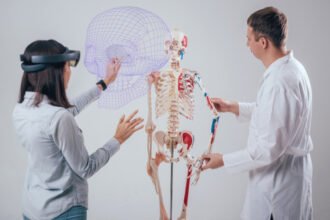When I was in medical school in the 1990s, students were given a bleak picture of the life of a subspecialist. We were told that there would be few job opportunities and that the only way to ensure a job was to pursue a career in primary care. Many of my classmates did go into primary care but the majority of us accepted residency positions in surgery, neurosurgery and other medical subspecialties. As we completed our training, we found that there were actually plenty of job opportunities for subspecialists. In fact, other than in underserved areas, shortly after my graduation from medical school primary care doctors were abundant. However, times are now much different. As discussed in the New York Times this week, it is becoming more and more difficult for patients to find primary care doctors. In a very short time, there will be more than 40 million newly insured patients that flood the system. All of these patients will need primary care providers.
Today’s medical students are saddled with enormous debt. The average cost for a medical education at a public university is $29K per year for four years; the median cost at a private school is nearly $50K per year for four years. Many students leave medical school and enter residency training programs with between $200 to $300K in debt. The cost of a medical education has risen almost 300% over the last 20 years. Now, particularly in primary care, salaries and reimbursements are significantly lower than in previous decades. Add to that the ever-increasing burden of paperwork and administrative duties that are required of primary care physicians and it becomes obvious why there is a shortage of newly trained primary care practitioners. Many students pursue a medical education to make a difference and to help people–many enter school wanting to be primary care providers and work in underserved areas. However, the financial realities of debt often force students to change their minds and seek residencies in subspecialties that hold the promise of better financial return.
Healthcare reform is important. We must focus on providing quality care to patients who need it in the US today. However, we must also reform the medical education system. No longer can we continue to allow the costs of tuition to rise to astronomical levels and at the same time lower the potential earnings for medical school graduates. If we continue on the current path, we will make a medical education an “upside down” investment. Moreover, allowing the tuition of medical schools to soar will make it more difficult for bright students with limited financial means to attend. We will, in fact, self-select medical school classes of the financially privileged and prevent other very talented less affluent students from attending. Although I was fortunate enough to receive an academic scholarship to medical school, I often ate macaroni and cheese and ramen noodles for weeks at a time in order to make ends meet. I had a job moonlighting as an MCAT preparatory course instructor. But, I did have access to an excellent medical education. In addition to containing the cost of a medical education, we must also address the issue of the investment of time–is it really necessary for physicians to attend four years of undergraduate work and then four years of medical school? In many countries in Europe, a combined track of 6 years produces well trained physicians that do very well in US residency training programs. Many students do not begin their careers until their early 30s due to the combination of undergraduate and graduate degrees coupled with prolonged fellowship training programs.
The US offers some of the very best training for physicians in the world. We are fortunate to have some of the finest institutions with cutting edge technology. Our students are able to be trained in the most sophisticated medical procedures and are able to participate in research that makes a difference in the lives of many patients. However, the medical education system in the US is currently broken and something must be done to fix it quickly if we are going to keep up with demand. No longer can we squeeze the young physician at both ends–astronomical educational costs, prolonged times to acquire both undergraduate and graduate degrees must be addressed as salaries and earning potentials continue to be regulated, lowered and limited. Primary care doctors are essential. They are the entry point for patients and the stewards of our healthcare. Yes, there is a shortage of primary care physicians today and even greater shortages loom ahead. In order to fix this problem, we must closely examine the system and make changes that allow for access for all qualified students with a more reasonable time investment. In the end, our goal should be to produce the best physicians in the world, who are motivated to care for the patients who desperately need them today and in the future.
The post Primary Care Shortage? It’s Time to Examine Medical Education in the US appeared first on The Doctor Weighs In.






